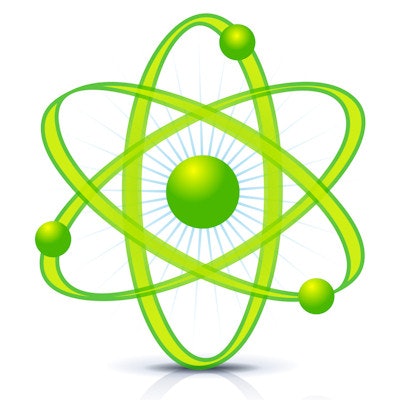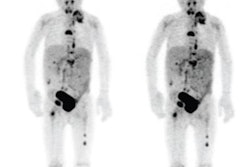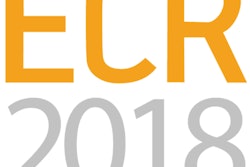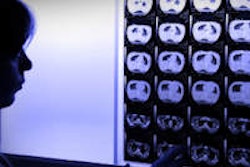
DENVER - By providing basic educational materials on nuclear medicine and the potential risks from radiation exposure, clinicians can make patients feel more comfortable about their upcoming scans, according to a presentation on Tuesday at the Society of Nuclear Medicine and Molecular Imaging (SNMMI) meeting.
By giving patients information about nuclear medicine and how safe the scans are, clinicians at Walter Reed National Military Medical Center in Bethesda, MD, found through a follow-up survey that patients better understood the specialty and had fewer concerns about their procedures.
"The [study] data back up that patients' knowledge improved from good to very good and their concerns diminished from slightly worried to not worried in a statistically significant way," said lead author and nuclear medicine fellow Dr. Shahin Nassirkhani. "This supports the finding that we should provide some educational materials for our patients."
Escalating dose
Between 1950 and 2006, the frequency of diagnostic radiologic exams in the U.S. has increased almost 10-fold. Meanwhile, the per-capita annual effective radiation dose from medical procedures increased approximately sixfold, from 0.5 mSv in 1980 to 3.0 mSv in 2006, according to studies cited by the researchers.
"This has led to more patient awareness and sensitivity to this issue of radiation exposure," Nassirkhani told SNMMI 2017 attendees. "However, studies have shown that these perceptions and concerns vary widely across the spectrum. Because of that, we decided to have this survey assessment of our patients at our institution in regard to their perceptions and concerns about their nuclear medicine radiation risk before and after a brief education intervention."
Their hypothesis was that patients' self-assessed knowledge about radiation risks would improve and their concerns would diminish after they read brief educational material on radiation risks.
The researchers asked 100 patients who were scheduled to undergo nuclear medicine studies at Walter Reed between November 2016 and January 2017 to complete an anonymous survey during the check-in process. The subjects were almost evenly split between men and women, and 51% were 60 years of age or older.
The questionnaire included a self-assessment of the participants' knowledge of nuclear medicine and whether they had any concerns about that day's scan. Their level of familiarity with nuclear medicine was ranked on a scale of 1 to 5, with 1 being poor and 5 meaning excellent. Likewise, their concern about the scan was rated from 1 (extremely worried) to 5 (not worried).
Patient tutorial
After the survey was completed, the patients were given an educational pamphlet on nuclear medicine radiation risks. It began with details on the "as low as reasonably achievable" (ALARA) principle for radiation dose and discussed how estimates of the exact risks of radiation are varied and somewhat uncertain.
The document also detailed the linear no-threshold (LNT) theory, which holds that exposure to very small levels of radiation -- such as those in nuclear medicine, CT, and x-ray studies -- can cause damage and should be limited whenever possible. In addition, patients were given examples of radiation they may be exposed to on a daily basis, including 0.0001 mSv of radiation from a banana.
"We put the risk in perspective. For instance, the lifetime risk of a fatal automobile accident is about 1%," Nassirkhani said. "Naturally occurring cancer is about 3.5%. Exposure to about 10 mSv, which is like a CT scan of the abdomen or pelvis, could increase your cancer risk by 0.05%. But we stress these [numbers] are population averages and don't necessarily reflect the risk of any single individual patient."
After the patients read the information, they were asked to answer additional questions:
- Having read the information section, how would you now rate your knowledge about the radiation risks of your study today?
- How concerned are you now about radiation risks of today's study?
The before and after responses were analyzed using the Wilcoxon signed-rank test for median values along with the corresponding p-values.
Improved perceptions
All five choices for rating one's knowledge and concern were checked off by the patients prior to reading the pamphlet. Their knowledge of nuclear medicine and their upcoming scan had a median rating of "good." Following the tutorial, the median response improved to "very good."
Regarding concern about the procedure, the median rating improved from "slightly worried" before the educational intervention to "not worried." All of the results carried a p-value of less than 0.005, meaning the changes were statistically significant.
| Effect of radiation education | |||
| Pre-educational survey | Posteducational survey | p-value | |
| Median knowledge response | 3 - Good | 4 - Very good | < 0.005 |
| Median concern response | 4 - Slightly worried | 5 - Not worried | < 0.005 |
Based on the results, Nassirkhani and colleagues concluded their hypothesis was confirmed: By providing the educational material, patients' knowledge about radiation risks improved and their concerns diminished.
Nassirkhani told the attendees that the pamphlet underwent some fine-tuning as the researchers implemented their educational plan.
"Initially, Walter Reed had an educational website, but it was a little complicated," he said. "With the help of the faculty advisor, we brought it to a basic junior high or high school level so all of our patients could easily understand it."




















